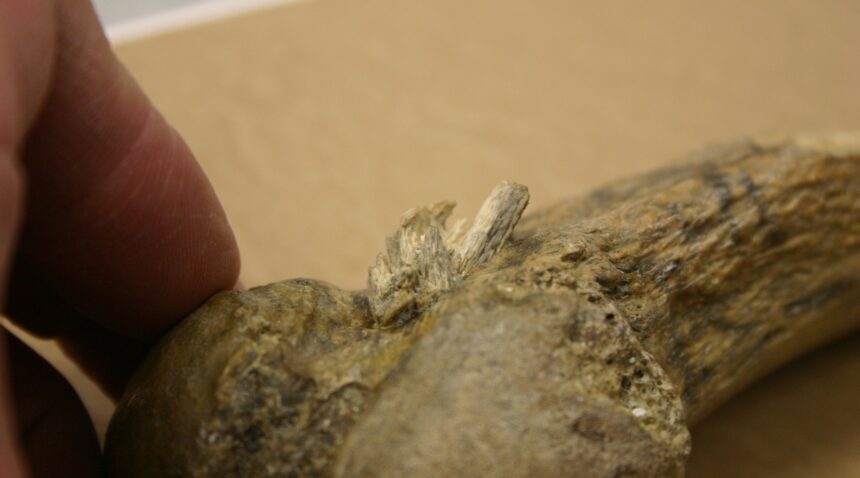
Dr. Michael Waters, distinguished professor of anthropology and director of Texas A&M's Center for the Study of First Americans, led the team whose findings were published this week in Science Advances.
The team studied bone fragments embedded in a mastodon rib bone which was first discovered by Carl Gustafson, who conducted an excavation at the Manis site in Washington state from 1977 to 1979.
Using a CT scan and 3D software, Waters and his team isolated all the bone fragments to show it was the tip of a weapon — a projectile made from the bone of Mastodon, prehistoric relatives of elephants.
"We isolated the bone fragments, printed them out and assembled them," Waters said. "This clearly showed this was the tip of a bone projectile point. This is this the oldest bone projectile point in the Americas and represents the oldest direct evidence of mastodon hunting in the Americas."
Waters said at 13,900 years old, the Manis point is 900 years older than projectile points found to be associated with the Clovis people, whose stone tools he has also studied. Dating from 13,050 to 12,750 years ago, Clovis spear points have been found in Texas and several other sites across the country.
"What is important about Manis is that it's the first and only bone tool that dates older than Clovis. At the other pre-Clovis site, only stone tools are found," Waters said. "This shows that the First Americans made and used bone weapons and likely other types of bone tools."
He said the only reason the Manis specimen was preserved is because the hunter missed, and the projectile got stuck in the mastodon's rib.
"We show that the bone used to make the point appears to have come from the leg bone of another mastodon and was intentionally shaped into a projectile point form," Waters said. "The spear with the bone point was thrown at the mastodon. It penetrated the hide and tissue and eventually came into contact with the rib. The objective of the hunter was to get between the ribs and impair lung function, but the hunter missed and hit the rib."

"In our new study, we set out to isolate the bone fragments using CT images and 3D software," he said. "We were able to create 3D images of each fragment and print them out at six times scale. Then we fit the pieces back together to show what the specimen looked like before it entered and splintered in the rib."
Not much is known about the people who used the Manis spear point other than they were some of the first Indigenous people to enter the Americas. Waters said the Manis site and others are giving archaeologists some insight.

"It is interesting to note that in Idaho there is the 16,000-years-old Coopers Ferry site, in Oregon is the 14,100-year-old site of Paisley Caves. And here we report on the 13,900-year-old Manis site. So there appears to be a cluster of early sites in the Northwestern part of the United States that date from 16,000 to 14,000 years ago that predate Clovis. These sites likely represent the first people and their descendants that entered the Americas at the end of the last Ice Age."



Where are THEIR tools? Dwellings?
Artifacts? Were they here before the migrations back an forth to and then from asia?
Or destroyed during the dryas?
It would be super neat-o if our history wasn t hid from us and slowly released in crumbs
But then, how could we be kept in slavery if we All knew the real , repeating, cyclical, stories.
You know, the ones that every ancient society knew about. The ones that actually govern the natural forces on earth.
Damn these romans